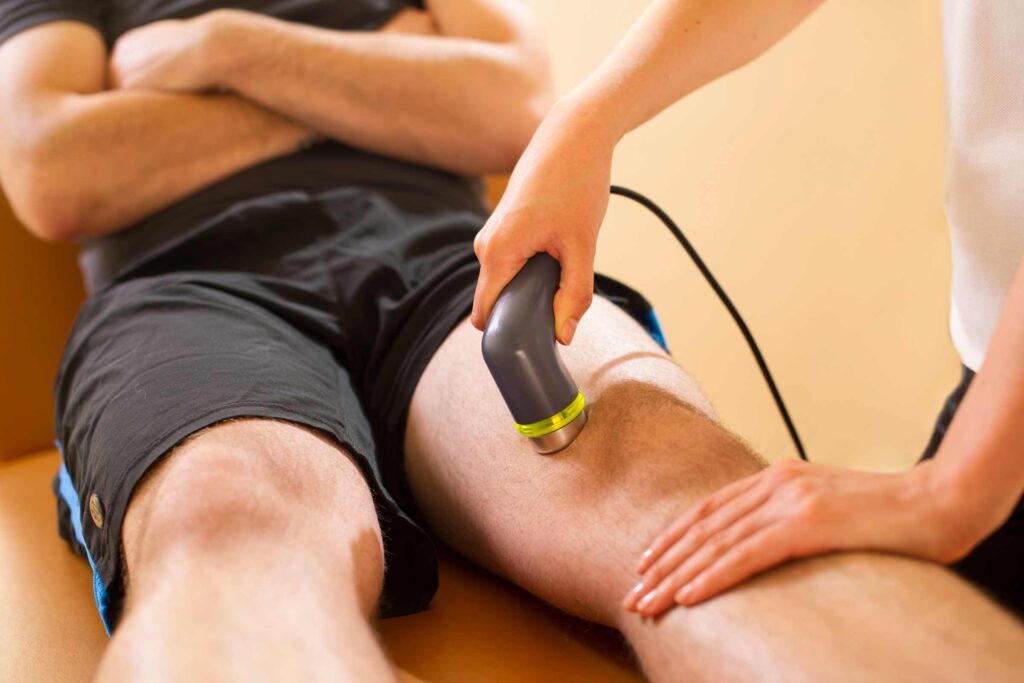Joint pain can be a formidable adversary, limiting your mobility, causing discomfort, and affecting your overall quality of life. Whether it’s due to arthritis, injury, or other conditions, living with joint pain can be challenging. However, physiotherapy offers a beacon of hope for those seeking relief and a path to a pain-free life. In this article, we’ll explore how physiotherapy can help you break free from joint pain and regain control of your mobility and comfort.

Understanding Joint Pain
Joint pain can manifest in various ways, from a dull ache to sharp, intense discomfort. It often occurs due to:
Arthritis: Forms like osteoarthritis and rheumatoid arthritis trigger inflammation and joint damage.
Arthritis, a prevalent cause of joint pain, introduces inflammation and damage to the joints. Physiotherapy aims to manage these symptoms through targeted exercises and pain relief techniques, offering relief to arthritis sufferers.
Injuries: Traumatic incidents such as fractures or ligament tears can result in acute or chronic joint pain.
Injuries, whether from accidents or sports, often lead to joint pain. Physiotherapy plays a pivotal role in the rehabilitation process, employing tailored exercises and manual therapies to facilitate recovery and reduce pain.
Overuse: Repetitive motions or excessive strain on joints, prevalent in athletes and certain professions, contribute to joint pain.
Professions involving repetitive movements can strain joints, causing discomfort. Physiotherapy intervenes by addressing the root cause, offering exercises and lifestyle modifications to prevent further strain.
Age-Related Changes: Natural wear and tear on joints as we age leads to pain and stiffness.
Age-related joint changes are common, resulting in pain and stiffness. Physiotherapy caters to this demographic by focusing on gentle exercises to maintain joint mobility and alleviate discomfort.

The Role of Physiotherapy in Managing Joint Pain
Physiotherapy offers a multi-faceted approach to addressing joint pain and its underlying causes. Here’s how:
Assessment and Diagnosis: Physiotherapists conduct a thorough assessment to precisely diagnose the source of joint pain. Factors like joint alignment, muscle strength, flexibility, and underlying medical conditions are considered.
The assessment phase in physiotherapy is crucial for accurate diagnosis. By evaluating various factors, physiotherapists create a roadmap for tailored treatment plans, ensuring a targeted approach to joint pain.
Customized Treatment Plans: Tailored treatment plans are crafted based on the assessment, addressing individual needs and goals.
No two individuals experience joint pain in the same way. Physiotherapy recognises this and develops bespoke treatment plans, incorporating a variety of techniques to suit the unique requirements of each patient.

Pain Management: Various techniques, including heat therapy, cold therapy, ultrasound, and electrical stimulation, are employed to manage pain and inflammation.
Physiotherapy goes beyond exercises; it encompasses pain management strategies. Techniques like heat therapy and ultrasound aid in reducing pain and inflammation, enhancing the overall effectiveness of the treatment.
Range of Motion Exercises: Physiotherapy incorporates exercises designed to enhance joint mobility by gently stretching and strengthening the muscles surrounding the affected joint.
Range of motion exercises form the cornerstone of physiotherapy. These targeted exercises aim to improve joint flexibility, promoting better mobility and reducing stiffness.
Strength Training: Building strength in supporting muscles reduces stress on the joint, providing relief and enhancing stability.
Strengthening the muscles around the affected joint is integral to physiotherapy. This not only alleviates stress on the joint but also contributes to overall joint stability, aiding in long-term pain management.

Manual Therapy: Hands-on techniques such as joint mobilization and soft tissue massage help release tension, improve joint function, and reduce pain.
Manual therapy adds a hands-on dimension to physiotherapy. Techniques like joint mobilization and massage are employed to alleviate tension, enhancing joint function and reducing pain.
Gait Training: For those with walking difficulties due to joint pain, gait training focuses on improving walking patterns and posture.
Joint pain often affects walking patterns. Gait training in physiotherapy specifically addresses these challenges, helping individuals regain confidence and stability in their movement.
Posture Correction: Addressing poor posture through exercises and education helps alleviate joint pain.
Poor posture contributes significantly to joint pain. Physiotherapy not only corrects posture but also educates individuals on maintaining proper alignment, and preventing the recurrence of joint discomfort.
Home Exercise Programs: Patients receive personalized home exercise programs to continue their progress independently.
Continuity is key in managing joint pain. Physiotherapy extends its impact beyond the clinic by providing patients with tailored home exercise programs, ensuring consistent progress.
Lifestyle Modifications: Physiotherapists guide patients on lifestyle changes, including ergonomics and activity modification, to prevent further joint stress.
Beyond exercises, physiotherapy addresses the root of joint pain by recommending lifestyle changes. Ergonomic adjustments and activity modifications play a pivotal role in preventing the exacerbation of joint stress.

Benefits of Physiotherapy for Joint Pain
Pain Relief: Physiotherapy effectively alleviates pain and discomfort, providing a pathway to regain control over daily life.
The primary goal of physiotherapy is pain relief. By employing a combination of techniques and exercises, physiotherapists empower individuals to manage and overcome the challenges posed by joint pain.
Improved Mobility: Enhanced joint function and flexibility lead to improved mobility and expanded range of motion.
Physiotherapy doesn’t just aim for pain relief; it focuses on restoring functional mobility. Improved joint function and flexibility translate into a noticeable enhancement in overall movement and range of motion.
Avoiding Surgery: In certain cases, physiotherapy can avert the necessity for surgery by addressing the root causes of joint pain.
Surgery is not always the only solution. Physiotherapy offers a non-invasive alternative, addressing underlying issues and potentially eliminating the need for surgical intervention.
Preventing Recurrence: Physiotherapists focus on averting future joint pain by addressing contributing factors and imparting self-management techniques.
Physiotherapy isn’t just about the present; it’s an investment in the future. By addressing contributing factors and educating individuals on self-management, it actively works towards preventing the recurrence of joint pain.
Enhanced Quality of Life: Living without the burden of joint pain significantly improves overall quality of life and mental well-being.
Beyond the physical realm, physiotherapy contributes to an enhanced quality of life. By liberating individuals from the burden of joint pain, it positively influences mental well-being, fostering a holistic sense of wellness.
In conclusion, physiotherapy is the magic wand that can help you break free from the shackles of joint pain. By working with a skilled physiotherapist and committing to your personalized treatment plan, you can experience the transformation from discomfort and limited mobility to a life free from joint pain, where mobility and comfort are your allies once again.
If you’re suffering from joint pain, feel free to get in touch with us for a consultation at any of our physiotherapy clinics in Goa.

